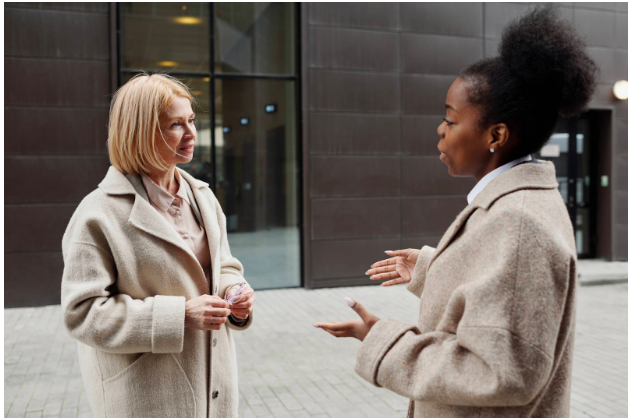We have a tendency to blame modern technology for the death of conversational art. People don’t talk; they tweet, they hashtag, they <3.
A conversation is an exchange of ideas and opinions between minds. By definition, you will need at least two persons to consider it a conversation. Anyone who has once tried to keep a Group chat on Whatsapp organised knows exactly why you can’t have too many participants. Ideally, if we are to trust the esthete’s description, a conversation is the meeting of two polished minds. It takes two to have a conversation that is substantial, informative, and enjoyable all at the same time.
Smartphones and modern communication tools don’t interfere with any of the elements inherent to the conversation. On the contrary, they add an extra layer to the definition, ensuring that individuals who are not in the same place can remain present in the moment. Yet, the introduction of engaging and advanced technologies seems to kill the art of conversing.

Smart help chats & programmes already talk to you
People need to talk. It’s part of human nature. But finding an interlocutor ready to engage in a conversation has become a modern times’ challenge. In the current situation, reaching out to an individual to express thoughts and build an exchange, has moved to the virtual realms. Lockdown and social distancing have forced the conversation onto the online sphere more than ever before. If you need to talk, you can find a chat room available. There’s no need to worry about joining in the middle of a debate, modern languages such as java reactive programming ensure you get to see what was happening before you logged in. But is it a real conversation? Are you truly able to build a meaningful exchange with one interlocutor, or are you simply sucked into a multi-sided series of real-time sentences?
Real engagement with one-sided conversations
Late At Tate Britain Online hosts its first event in a few hours (time of writing). The idea is to bring free events and workshops online for all art lovers. Curated by young people, the Late at Tate online targets young people too. But you can be sure that viewers of all ages will be joining the event. The streaming show showcases discussions on making art in isolation and what it means to be creative. Streaming implies a real-time event with interaction options. But it’s unlikely viewers will have a voice in the scheduled show. By faking the conversation principle and making you part of the moment, Late at Tate can create engagement and interest.
The art of the conversation online: I need to talk
Platforms such as Reddit give individuals a voice to express their thoughts and concerns. The subreddit I Need to Talk To Someone enables you to initiate the exchange. Other users can comment. But that doesn’t make it a conversation. In fact, it is a monologue. You don’t need to talk; you need someone who listens. Comments provide the proof your words have been read, but there’s no conversational journey.
In conclusion, despite surrounding ourselves with communication technologies, we seem to have lost the old art of conversation. Yet, this asks a much more pressing question, namely: Do we need a new kind of conversation in 2020?





